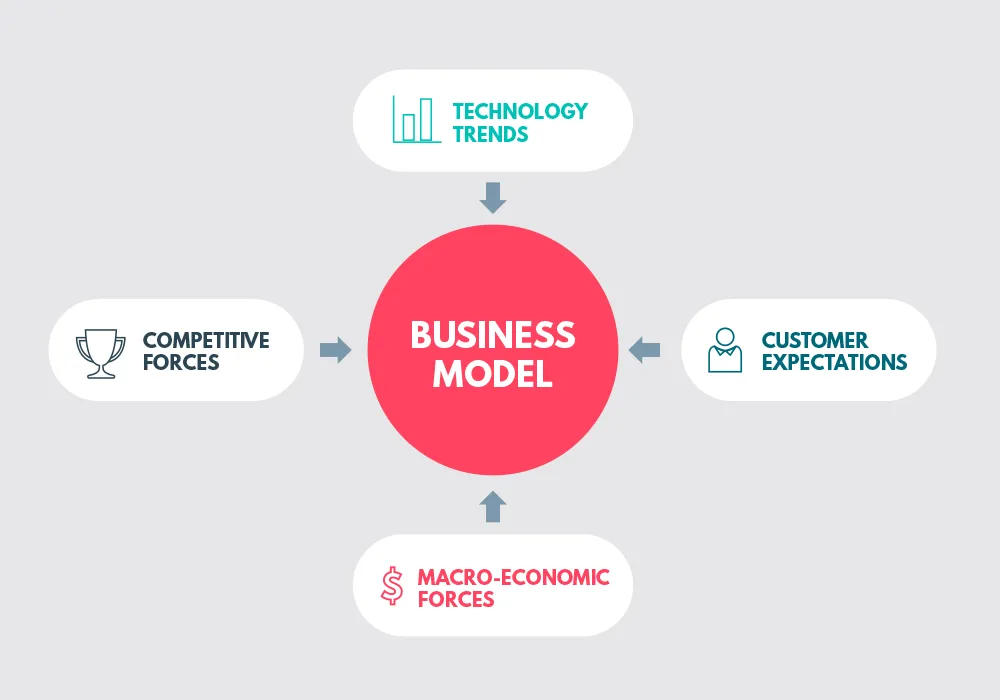-
Mar 18 2018 THE PARADIGM SHIFT OF BUSINESS TRANSFORMATION
Part 1 of 3: Business & Digital Transformation (Read Part 2 and Part 3)
There’s been disruption all around us. Over the past three decades, the rise of high speed internet, exponential growth of computational power, and ever-decreasing costs of storage have drastically changed how we live, what we interact with, and how businesses operate. The democratization of data and technology gave us all easier access to things that we had never imagined before. It helped organizations to push boundaries and disrupt the status quo. However, the creative disruption process is not always easy or straight-forward.
For roughly the last 15 years, thanks to bandwidth ubiquity, we have seen successful new business models emerge and threaten conventional business practices and value propositions. Netflix displacing Blockbuster, Borders succumbing to Amazon, Uber, and Airbnb challenging traditional transportation and travel brands, and countless other examples.
Not only are technology trends shaping business models, but the ever-evolving behaviors and expectations from consumers are also impacting organizations’ current practices.
In some cases, consumers’ unintended use of products may benefit businesses to completely redefine their value proposition. The original intent transforms itself into something that’s not imagined by the company’s leaders. Kleenex is a great example. They started out in 1924 as a disposable towel used to take off make-up. Its unintended use started in 1926 after the manufacturer received tons of customer feedback indicating that most people were using the product to blow their noses. They started advertising it as such and doubled their sales. The rest is history.
Fast forward to 2016 where organizations like Under Armour have shifted their entire business model from a sports clothing company to an innovation and experience company, simply based on how their customers were using their products and interacting as a community. Organizations that are nimble enough to respond to such changing user expectations succeed wildly and make it impossible for the competition to capitalize on that change.

Competition and macro-economic forces also push organizations to reevaluate their business models. The auto and aerospace industries are well known for reacting to such forces. Boeing saw the threat of higher gas/oil prices as well as an adverse impact to the environment with continued climate changes and reacted early on to bring the revolutionary 787 Dreamliner to the market. Not only has this product had a better and different value proposition for airline companies, but it also helped Boeing to take the lead over its competitors. Similarly, Toyota, GM, and other car manufacturers reacted to rising gas prices by introducing hybrid and eventually electric cars to compete with Tesla and to go after a cost-conscious consumer sector.
A PARADIGM SHIFT
The fall of AOL, Circuit City, Kmart, Yahoo and the rise of mobile-only business such as Uber and Venmo have forced many big and small companies to re-think their own models. In industry after industry, scenarios that once appeared improbable are becoming all too real, prompting boards and CEOs of wavering businesses to embrace transformation. Transformation is one of the most overused terms in business, perhaps just behind innovation — and it’s often misunderstood and loosely used by many business leaders. This is because organizations have failed to create a shared definition of what ‘transformation’ means to them. Many times leaders use the term nebulously for incremental changes and proudly wear the badge of being transformative.
Transformation, as I see it, is a paradigm shift for organizations. It significantly alters their pace and rhythm, while improving key business drivers. The shift often results in creating, or significantly modifying, business processes and the value it yields for its customers. However, when enterprises embark on a ‘transformation’ journey, they often fail to communicate ‘why’ to employees. This is a responsibility that starts in the C-suite and must be championed from the top down. Building a compelling vision, aligning key business leaders, and enrolling service line and business unit managers into the concept will help successfully motivate the employee base to adopt and advocate for the change.
All businesses understand that change is inevitable. Eventually, every brand must adapt to market shifts, consumer behaviors, and technology trends in order to survive. The difference between successful organizations and those that fail, however, is the foresight to recognize that change before it’s too late. Transformation is happening now, and the sooner brands treat it with a sense of urgency, the sooner they can spur their business forward.
Note: Originally, this article was published in Spring of 2017 on R2i website.


